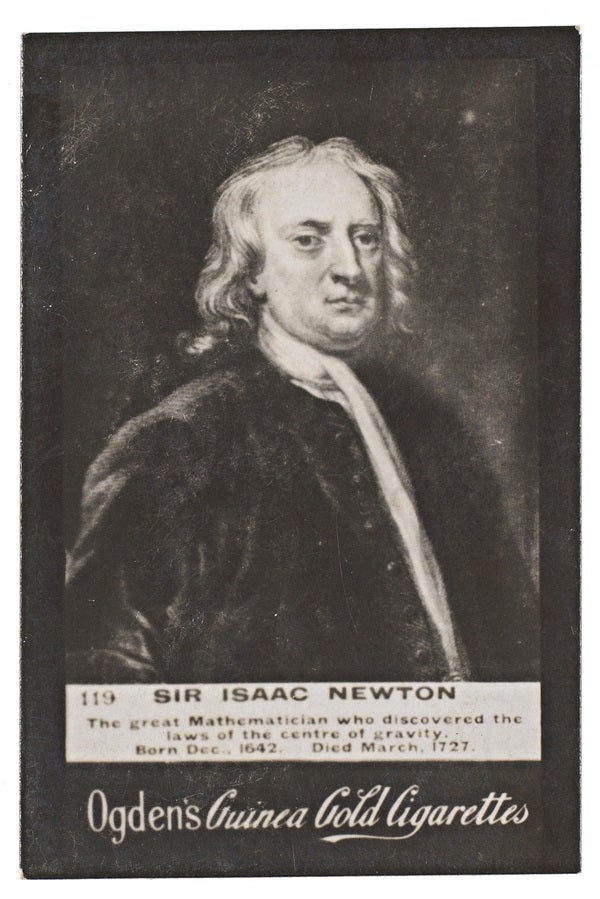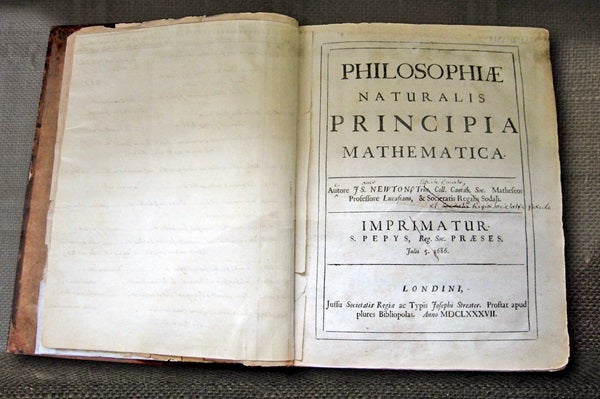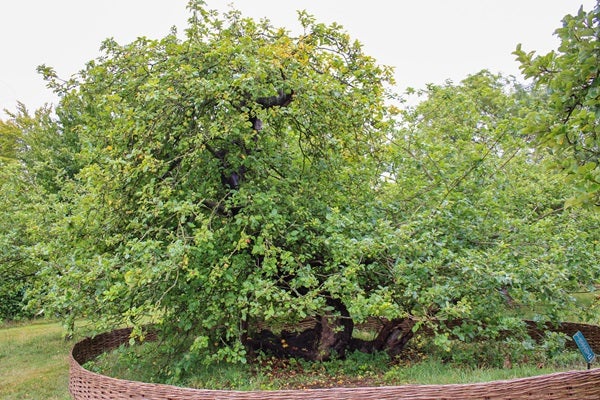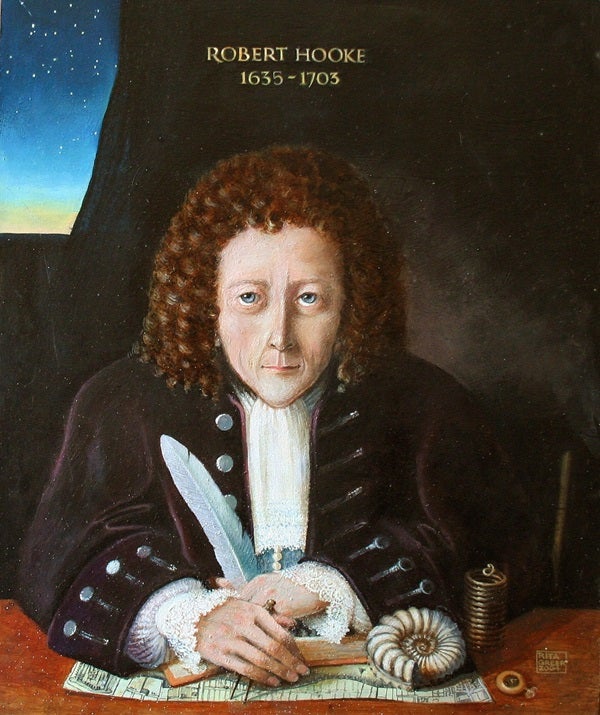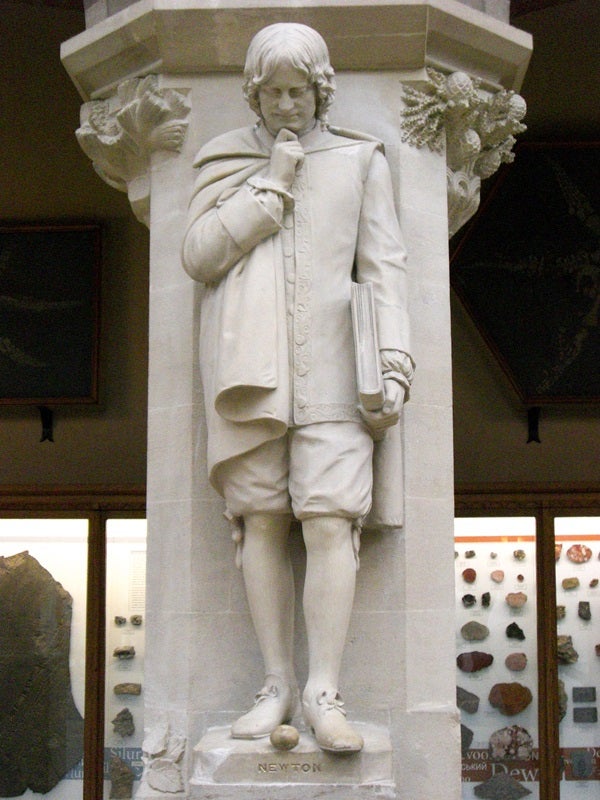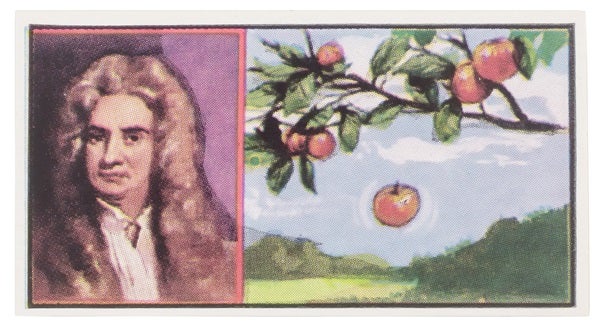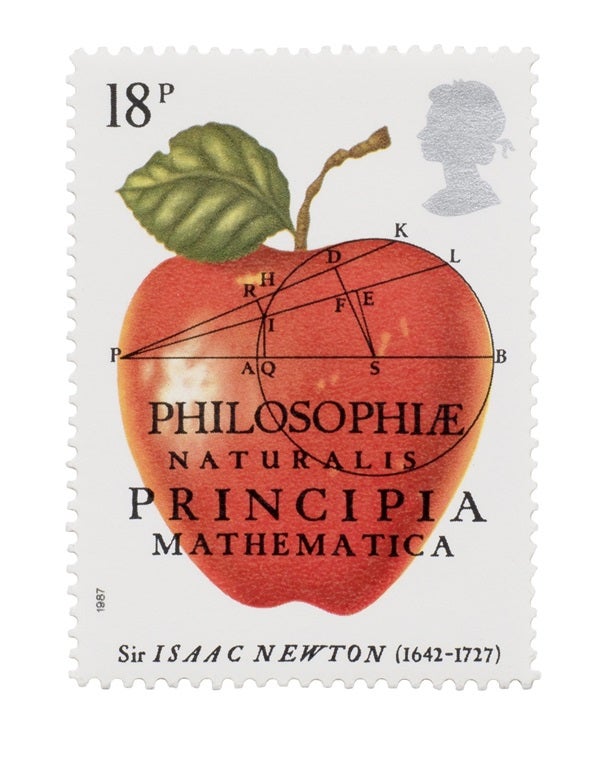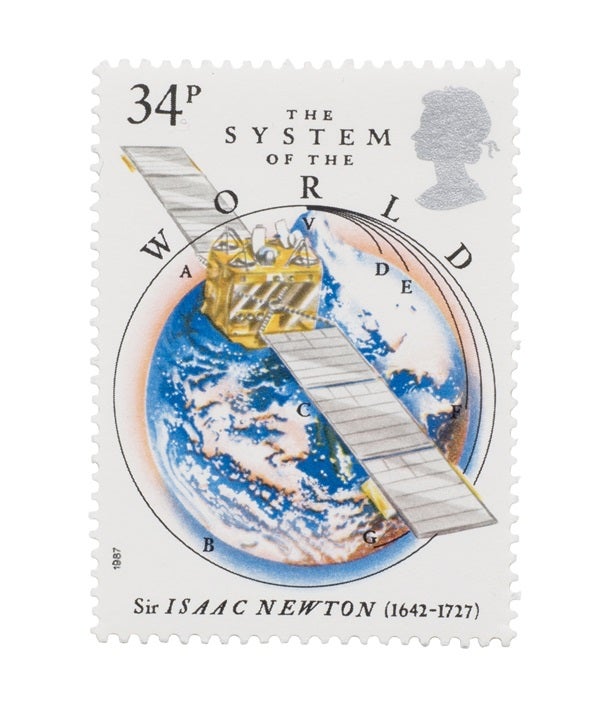It’s easy to think of Newton only as a lonely and antisocial genius sitting at a desk, unraveling the mysteries of the universe. Yet there is so much more. In his lifetime, Newton vigorously conducted experiments, constructed models, conceived of the theory of gravity, and built the first usable reflecting telescope. He created a new form of mathematics, reformed the currency of England while Master of the Mint, and pursued counterfeiters to their deaths on the scaffold. He also studied the forbidden art of alchemy. Newton was a deeply religious man, but a secret nonconformer to the Church of England. He was cantankerous, paranoid, and feared that his hard work would be stolen by others.
Early life and experiments
Newton was a product of mid-17th century England. To understand the man, we need to understand the time and place in which he lived. King Charles I was beheaded in 1649, when Newton was 7 years old, and Oliver Cromwell and his son ruled England with a firm Puritanical hand for the next 11 years. Newton and his family were members of the Church of England, and young Isaac was well versed in church doctrine. But his beliefs changed as he grew older, ultimately putting him in peril of dismissal from his post at the University of Cambridge.
Born on Christmas Day 1642 (according to the old Julian calendar then in use), Newton was a sickly child and not expected to live. His father died a few months prior to Newton’s birth, and his mother, Hannah, remarried three years later. Newton was left in the care of his maternal grandmother. Apparently, the young Isaac felt abandoned — years later, he listed as a grievous sin an angry outburst in which he had threatened to burn the house down around his mother and stepfather.
Newton’s mother did her best to turn her son into a farmer, but Newton would have none of it. He was allowed to attend university because, according to his mother’s brother, William Ayscough, he was not fit to do anything else, thanks to his poor health growing up and his apparent lack of interest in anything except making models and reading books.
Newton was a vigorous experimenter, and the stories of his work and discoveries made while isolated at Woolsthorpe during the plague years are well known. This is when he developed the binomial theorem that led to calculus, completed his early work on the theory of gravity, and conducted several optical studies, including his work with sunlight. By sending the Sun’s light through a slit in a window shade and passing the light through a prism, he broke the beam into a rainbow, or spectrum. Then, passing the light through a second prism, he realized that the prism wasn’t creating the colors, but that they were a property of the Sun’s light.
Newton also used himself as a guinea pig in what might have been a rather ill-advised attempt to better understand color and vision. In the first half of the 17th century, the French philosopher René Descartes had proposed a curious idea about color. He suggested that color perception was caused by pressure exerted on the eye by swirling vortices. Newton read about this and didn’t agree.
But not all of his experiments were quite so dangerous. He watched the light of the setting Sun through the fringes of a feather. This created a diffraction effect, producing bands of light and color as the incoming sunlight bent around the edges of each barb. In another effort to understand vision, Newton stared at an image of the Sun reflected in a mirror for as long as possible. When he finally looked away at a wall, he saw concentric circles of light and color he called “motion of spirits.”
Newton vs. Hooke
Although Newton is given credit for the theory of gravity, he wasn’t working in a vacuum. Robert Hooke, Edmond Halley, and others were also intrigued by the problem.
Hooke came from poor circumstances. He served as curator of the Royal Society, a scientific fraternity, in its early years, where he was charged with caring for the society’s growing collection of equipment and setting up the experiments for the regular meetings of its members. His 1665 book, Micrographia, was an instant hit. On January 20, 1665, Samuel Pepys, clerk of the Royal Navy and future president of the Royal Society, sat up reading his new copy until 2 A.M. Pepys declared Hooke’s work “the most ingenious book that ever I read in my life.”
But Hooke also tried to take on the great Newton. In the early 1670s, Hooke proposed the idea that the planets were held in place by a force inversely proportional to their distance from the Sun. Newton apparently had the same idea as early as 1666, but hadn’t published his work. In the summer of 1684, Hooke, Halley, and the English architect and astronomer Christopher Wren discussed the inverse square law over strong coffee without satisfactory results. Halley went up to Cambridge to see if Newton had any ideas. The resulting meeting lit a fire under Newton, culminating in the publication of Philosophiae Naturalis Principia Mathematica in 1687.
The war of words became increasingly bitter when they argued over color and the nature of light. Newton, however, struck the final blow. Hooke died in 1703. Later that same year, Newton became president of the Royal Society. One of his first acts was having the only portrait of Hooke destroyed. He also had a great deal of Hooke’s archived papers and research removed from the society. Fortunately, much of Hooke’s work was eventually recovered.
Newton turned on or argued with nearly everyone in the scientific community of the time. Most famous were his efforts to prove his discovery of calculus. The German mathematician Gottfried Leibniz published his work on calculus in 1684. Newton immediately tried to prove his precedence and started an acrimonious debate that lasted for years. He also turned on Huygens, as well as the first Astronomer Royal, John Flamsteed, and many others. He even accused Pepys, his friend, of speaking ill of him. It seems Newton could not stand to be upstaged or criticized by anyone, friend or foe.
Clash with the church
Genius is obsessive, and Newton was no exception. Two of his greatest interests were religion and the dark art of alchemy. His early list of “sins” clearly shows the depths of his religious convictions. One of the Church of England’s core beliefs is the doctrine of the Holy Trinity, which describes God as three separate entities. This doctrine almost spelled disaster for Newton and his career.
The young Newton began his studies at Trinity College in Cambridge in 1661. To earn his keep, he waited tables and cleaned rooms. Newton was awarded his bachelor’s degree in 1665, and although he briefly went home when the school closed due to plague, he was back at Cambridge by 1667 as a newly appointed fellow on the faculty. By 1669, Newton had been appointed Lucasian Professor of Mathematics. To remain in this post, he was required to take an oath stating that he believed and accepted the Thirty-nine Articles of the Anglican Church.
One of the articles to which Newton would need to swear was a belief in the Holy Trinity. This represented a major stumbling block for the young professor. In his early years at Cambridge, Newton had plunged into personal religious studies. With typical Newtonian intensity, he studied the history of the Christian church from its earliest days. He carefully analyzed the prophesies in the Bible and calculated the date of the crucifixion. He even tried to determine the date of the Apocalypse: Newton thought this would take place in the year 2060.
What disturbed him most was the concept of the three-in-one nature of God. Newton found the Holy Trinity not only illogical, but abhorrent. He had read the works of an early Christian named Arius. This writer denied the divinity of Jesus, and Newton fully embraced the idea. He could not, therefore, swear to believe in the Holy Trinity when, in fact, he did not.
These stamps were issued by the U.K.’s Royal Mail service in March 1987 to celebrate the 300th anniversary of Principia’s publication. They depict Newton’s work with light and color, as well as his characterization of gravity and its description of the orbital motion of bodies, which applies to modern satellites and planets alike.
Newton the alchemist
Newton was so obsessed with religion and alchemy that he wrote far more words on them than he ever did about gravity or optics. As a young boy, Newton spent time as an apothecary’s apprentice. He learned to make medicines and potions that he used the rest of his life. This may have been when he first developed an interest in alchemy. During the 17th century, philosophers and scientists still believed that they should be able to transmute one element into another. Such a process could bring great wealth to an individual who could, for example, change lead into gold. They thought this secret knowledge had simply been lost — and Newton believed he was just the man to rediscover it. He started experiments as an undergraduate and continued until at least 1693.
Newton had always been secretive and mildly paranoid. In 1693 he wrote to Pepys complaining of feelings of persecution, insomnia, memory loss, and loss of appetite. He even accused his longtime friend of spreading rumors about him and broke off their correspondence, though he later apologized.
But according to two papers published in 1979 in the Notes and Records of the Royal Society of London, these symptoms could have all been the result of mercury poisoning. Alchemists thought mercury played a major role in the transmutation process, and Newton used a lot of it. Heavy metal vapor must have filled his rooms. He even drank the stuff and complained of the aftertaste. It’s a miracle he lived.
Capturing counterfeiters
When the post for Warden of the Royal Mint opened in 1696, Newton was offered the job; he was later appointed to Master of the Mint in 1699. He left the University of Cambridge for the mint, which would be the final position he held during his life.
At the time, England’s currency was on the verge of collapse due to rampant counterfeiting. For centuries, coins had been struck by hand, leaving them with uneven edges. People would “clip” the edges and keep the excess, thus devaluing the coin. It was also easy to counterfeit these coins. Newton’s duties included overseeing the industrialization and standardization of the nation’s coinage.
He was also charged with finding and prosecuting counterfeiters. This was not to Newton’s liking. He protested the “vexatious and dangerous” duties but was told they were part of the job description. So, as in everything else, Newton plunged into this work. He began to pursue these malefactors and see that they were sent to the gallows. In his book Newton and the Counterfeiter, Thomas Levenson describes in detail Newton’s efforts to see such criminals hanged. His words and actions indicate he may have enjoyed seeing such rough justice done. It was not uncommon for Newton to personally go undercover in seedy bars and other areas of London in pursuit of his quarry.
Newton was a complex man living in a complicated age. It was a time when magic and science still intermingled, an age of tremendous intellectual advancement and lingering ignorance. When Newton died, his estate was worth more than $4 million in today’s currency. Even with all this wealth, Newton wore a gold ring set with a small but powerful magnetic lodestone, rather than some other valuable gem. The ancient word lode means path or journey, and Isaac Newton surely opened new paths along a complex and at times difficult journey.


